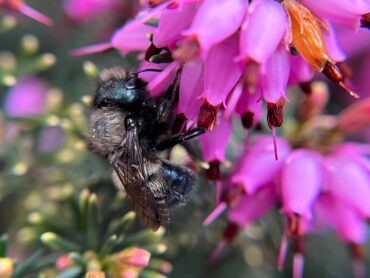 Exploring the beautiful Kitsap Peninsula, we can find an array of treasures in all shapes and sizes. From awe-inspiring forests to picturesque beaches and harbors, this region is a paradise for nature lovers. What we don’t often take notice of are the smaller treasures that keep our habitat healthy and thriving — native solitary mason bees.
Exploring the beautiful Kitsap Peninsula, we can find an array of treasures in all shapes and sizes. From awe-inspiring forests to picturesque beaches and harbors, this region is a paradise for nature lovers. What we don’t often take notice of are the smaller treasures that keep our habitat healthy and thriving — native solitary mason bees.
Mason bees may be small, but they are one of nature’s most efficient pollinators. These industrious little workers make up 90 percent of all bees on the planet, but unlike their social honeybee cousins, they work independently. Instead of living in a hive and relying on a queen, each female lays all her own eggs, finds her own food and locates premade holes in her habitat to lay her babies. They don’t produce honey or sting like other types of bees — making them safe for kids and pets to enjoy in their backyard.
What makes solitary bees so efficient is the way they pollinate. They have tiny hairs on their abdomen called scopa, which collects pollen when they belly flop onto flowers. This enables them to pollinate 95 percent of the flowers they land on, compared to the meticulous pollen gathering of honeybees that only have a 5 percent pollination rate.
On average, each solitary bee can visit over 2,000 blooms daily, making them the unsung heroes of the pollinating world. Not only can they help us grow more food, but their indiscriminate pollen-collecting habits benefit our native plants as well. By making surrounding flora healthier and enabling them to flourish in size, we encourage solitary bee activity, which helps filter out pollutants from air and water streams — increasing overall ecosystem health everywhere these little guys buzz around.
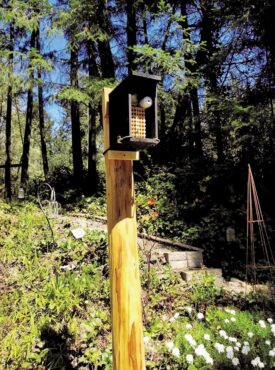 Garden Bees
Garden Bees
Bees are becoming an increasingly popular addition to gardens — but not just the honeybees. Solitary bees, unlike their hive-dwelling counterparts, live alone and peacefully help pollinate plants without fear of stings or aggression.
Native to the Pacific Northwest, blue orchard mason bees have a greenish-blue, iridescent sheen on their back and are often mistaken for a housefly. They emerge from hibernation in early spring, when temperatures reach about 55 degrees, and seek pollen and nectar from early spring blooms.
Their unique name derives from one of their main tasks: using mud for “masonry” work while constructing nests. Their mandibles are not strong enough to cut wood, so they search for natural cavities such as hollow stems, holes in wood made by insects or nesting shelters hung up by gardeners or farmers.
Once they have found the perfect nesting cavity, mason bees will use mud to seal one end and build a series of intricate nesting chambers, each including an egg, pollen loaf and another layer of mud. The bee will lay about 15 eggs in her lifetime and then the egg will turn into a larvae that will consume the protein-rich pollen loaf and spin a silk cocoon. The larva will grow into a full-grown bee inside the cocoon and emerge the following spring.
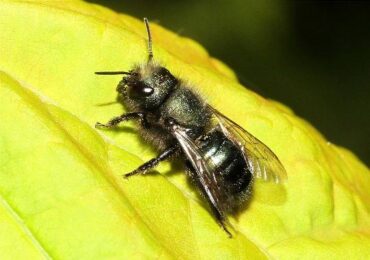 The Kitsap Peninsula makes an ideal home for solitary bees, with a habitat full of treasures to feed pollinators. Mason bees love our climate and up and down the peninsula, you’ll find their favorite food — madrona and big leaf maple trees that begin flowering in early spring. Due to this incredible habitat, Bothell-based company, Rent Mason Bees, donated and released over 160,000 mason bees on Bainbridge Island to farms, community gardens, heritage orchards, parks and the Bloedel Reserve. Rent Mason Bees is the largest solitary bee provider in the country, and harvests and cleans over 3 million mason bee cocoons and 40 million leafcutter bees to ensure that healthy clean bees are returned back to our environment.
The Kitsap Peninsula makes an ideal home for solitary bees, with a habitat full of treasures to feed pollinators. Mason bees love our climate and up and down the peninsula, you’ll find their favorite food — madrona and big leaf maple trees that begin flowering in early spring. Due to this incredible habitat, Bothell-based company, Rent Mason Bees, donated and released over 160,000 mason bees on Bainbridge Island to farms, community gardens, heritage orchards, parks and the Bloedel Reserve. Rent Mason Bees is the largest solitary bee provider in the country, and harvests and cleans over 3 million mason bee cocoons and 40 million leafcutter bees to ensure that healthy clean bees are returned back to our environment.
How to Support Solitary Bees in Your Backyard
Anyone can host solitary bees. They are the easy bees for your yard, with the maximum benefit of pollination.
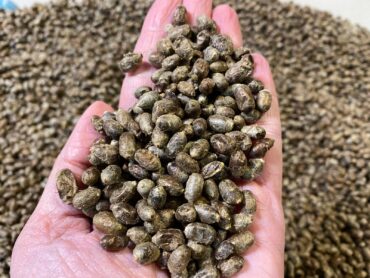 Offer food: After solitary bees emerge from winter slumber, they’re hungry and need food. Talk to your local garden nursery to learn what blooms in early spring and summer for your area or visit pollinator.org/gardencards to learn what to plant to support pollinators.
Offer food: After solitary bees emerge from winter slumber, they’re hungry and need food. Talk to your local garden nursery to learn what blooms in early spring and summer for your area or visit pollinator.org/gardencards to learn what to plant to support pollinators.
Look for morning sun: Set up a solitary bee house with a roof or cover to protect the nesting material from getting wet. Hang the house in morning sun.
Add nesting material: Insert proper nesting material to ensure your bees remain healthy all year long. Stacking trays or tubes that can be opened and separated are the best nesting material for bees. Don’t use bamboo reeds or holes drilled in wood. Mason bee nesting holes are smaller than those of leafcutter bees, so make sure you use the correct ones.
Provide mud or clay: Mason bees use mud or clay type of soil to plug their holes and lay their babies. Dig a hole about 10 feet away from their nest and stir in a mixture of mud and clay. Make sure it’s damp throughout the season.
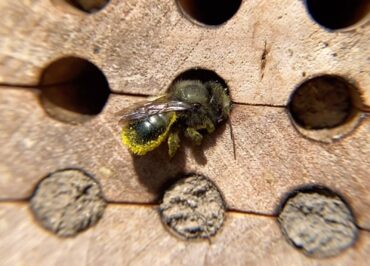 Avoid pesticides: Weed killer, slug bait and pesticides can harm all our pollinators. Remember that mason bees use the mud to place next to their babies, so any pesticides can kill developing babies.
Avoid pesticides: Weed killer, slug bait and pesticides can harm all our pollinators. Remember that mason bees use the mud to place next to their babies, so any pesticides can kill developing babies.
Clean every fall: This is one of the most important steps in hosting your own solitary bees. You must harvest and clean your mason bees every fall to remove predators. Bamboo reeds or holes drilled into wood cannot be opened and cleaned at the end of the season, which means mold, fungus and predators like Houdini flies and pollen mites can wipe out your solitary bees.
If you want the benefit of pollination, but not the hassle of cleaning the cocoons and sterilizing nesting blocks, you can purchase bees and rent nesting blocks from Rent Mason Bees. The company makes it easy to become a solitary bee host and will send you a starter kit with house, nesting block, clay and cocoons. Harvesting and cleaning the cocoons and blocks is a critical step when hosting solitary bees to remove harmful predators. When you rent, you release bees and then send back the nesting blocks in the fall and the Rent Mason Bees will take care of the maintenance and cleaning for you. Go to rentmasonbees.com for details.
The next time you’re out exploring the wonders around Kitsap Peninsula, remember to pay respect to these hardworking little heroes. They may be tiny, but their contribution toward keeping our environment healthy is huge.




























